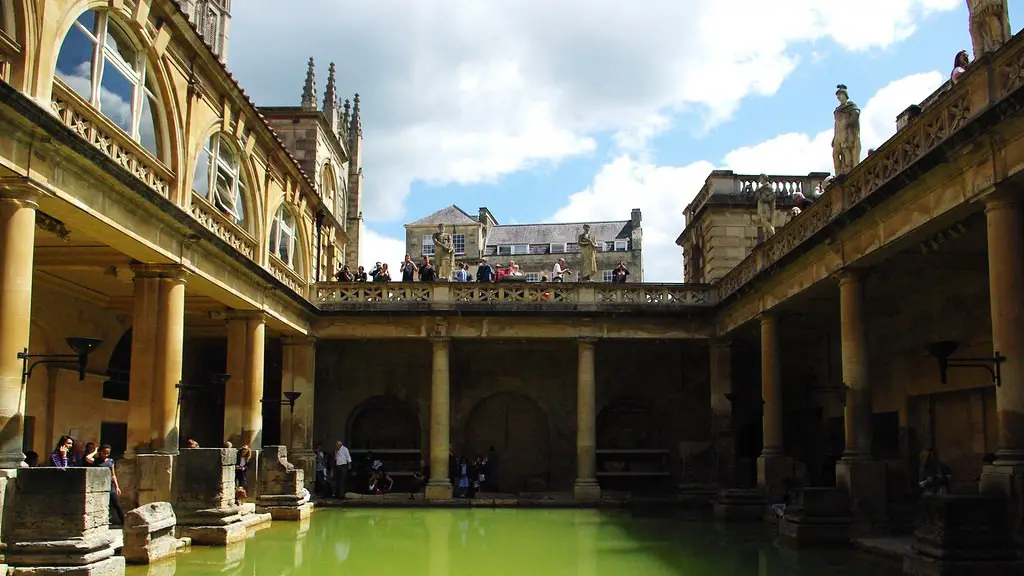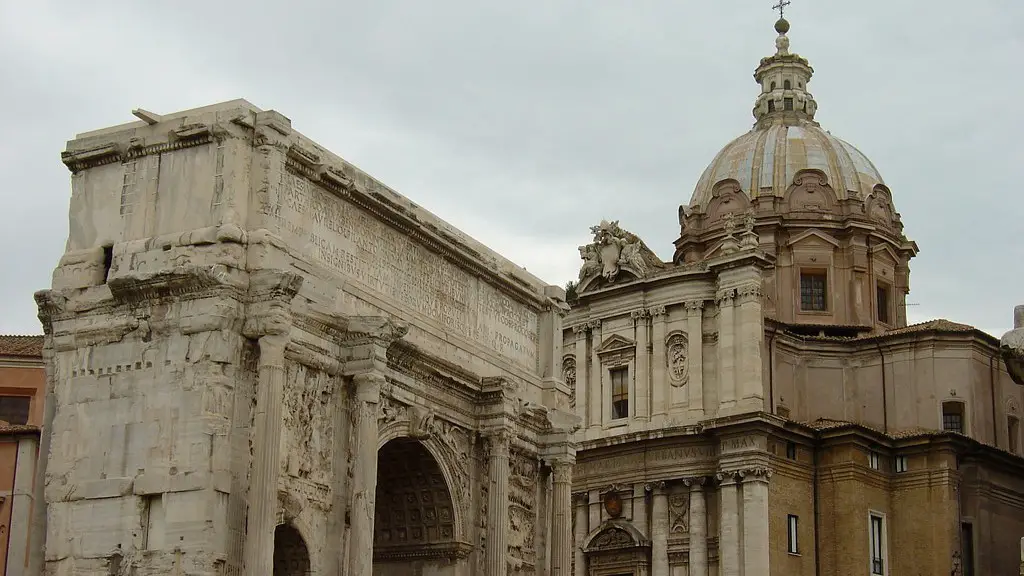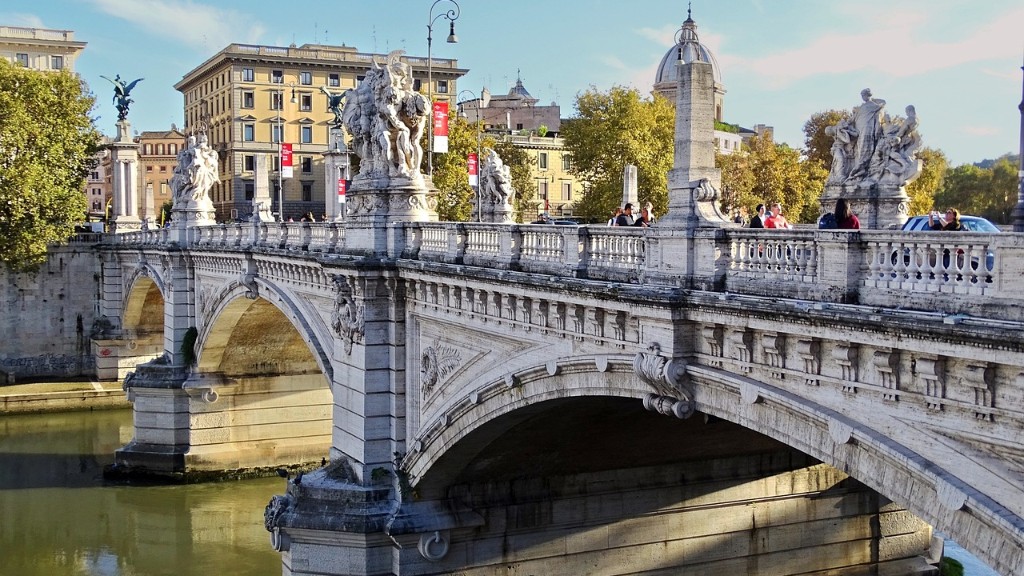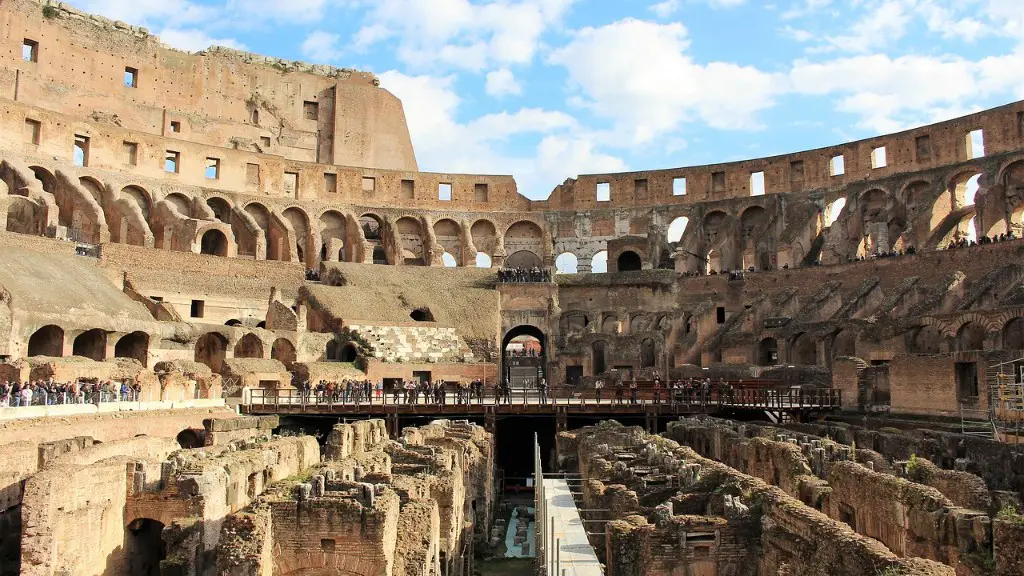When speaking of ancient Rome, many would think of the Coliseum and its Gladiators, the sprawling Forums, or Caesar’s famous crossing of the Rubicon. Rarely does one consider the rudimentary sanitation systems of the city, including the public toilets. Just like in the rest of the ancient world (Egypt, Greece, and numerous civilizations in Asia and beyond), public toilets were an integral part of Roman culture.
The public toilets of Ancient Rome served as a place for the people of the city to exemplify their simple and efficient style of communal living. In a time before hand-held fans, air-conditioning, and even fans, these public toilets provided a necessary and greatly appreciated service to the citizens of ancient Rome. In profile, these shared public toilets were built in front of the city’s columbiae or public baths. As building blocks for Roman civilization, the public toilets were a much needed amenity for citizens living in the overcrowded city.
These communal latrines came with a variety of facilities. Firstly, it should be noted there was no wall-to-wall separation between stalls. Instead, users of Ancient Rome’s public toilets were subjected to seating arrangements which varied from one location to another. While some locations provided benches that could accommodate several people at one time, others had individual marble seats with a groove in the back, preventing users from slipping off. To prevent any grotesque amounts of waste from accumulating, a number of public toilets had water jets or pools located underneath the seating area. These pools of water would clean and flush the waste down an intricate plumbing system, allowing a swift removal of excrement.
The plumbing systems under the public toilets, however, required the efficient use of resources. The availability of clean and drinkable water was a rare commodity in Ancient Rome, and managing the sewage system of its citizens was incredibly important. As a result, public sanitation policies were strictly enforced by local authorities, and in some cases, by the Roman Legions themselves. Given the dire consequences of poor sanitation, Ancient Rome’s toilets were routinely checked and cleaned to promote healthy hygienic practices.
The origin of the public toilets in Ancient Rome is unknown, though it is thought it was the Etruscans who were the first to introduce them to the city. Regardless of its origin, the evolution of these shared public places became a great convenience for the citizens of Rome. Not only did it provide them relief from the crime and filth of the city’s alleyways, but more importantly, it helped to ensure the health of its people.
Different Toilet Styles
Aside from the standard seating receptacles found in many public toilets in Rome, Ancient Rome was also home to a variety of other sanitation apparatuses. In the poorer parts of the city, “basket sewers” (tubs on wooden frames) were installed in the streets to allow citizens to dispose their waste. Though these primitive toilets eventually gave way to a more sophisticated method of waste removal, their initial use was invaluable in protecting the population from the city’s filth. In addition to these, the city also had a number of “sewer pipes” or underground cubicles, which allowed citizens to drop their waste without having to sit or stand on a platform.
Further examples of Ancient Rome’s sanitation technology include the use of public urinals, or “strigils”, designed to be used on doorways or arches. These urinals were practical because they could easily be accessible by both genders and allowed citizens to perform their business in privacy. Lastly, a type of toilet facility, known as a “cloaca” in Latin, was installed under private houses, offering a more discreet alternative to the public toilets.
Hygiene and Etiquette
Many of the rules and guidelines that contemporary societies have adopted around toilet hygiene were adopted in Ancient Rome. It was customary for citizens to use scented water for washing after using the toilet, especially if seated in one of the communal areas. Citizens were expected to wash their hands and rinse with water from a bowl located in the room before leaving.
In addition, there were also certain etiquette standards to be observed in order to maintain a healthy and considerate environment for all users. Quarreling, screaming or speaking loudly in public toilets was frowned upon and individuals could be punished for such offenses, depending on the severity. In fact, Emperor Constantine implemented a law in 321 A.D, according to which individuals caught fighting in public toilets would be exiled or sent to work in the mines.
The public toilets of Ancient Rome were a focal point of social life, a place where people could exchange ideas and news. As such, individuals could engage in small talk or even play board games while using the public toilets. Indeed, upon visiting one of these communal latrines, visitors would find pastimes such as ludus latronis and ludus duodecim scriptorum, two popular Roman board games.
Summary and Reflection
In summary, the public toilets in Ancient Rome offered a unique communal experience for citizens of the empire. Not only did it provide much needed respite from living in an overcrowded city, but it also helped to ensure the health of the population. Providing a variety of different toilet styles, from outback receptacles and basket sewers to urinals, Ancient Rome facilitated efficient and hygienic waste removal with its well-developed systems.
On reflection, it is interesting to note the similarities between Ancient Rome’s sanitation protocols and modern day protocols. Despite the advances in technology that have occurred since the days of the Roman Empire, the underlying principles remain largely the same. Indeed, healthcare professionals today still stress the importance of routine hand-washing, urge citizens to not speak loudly in public spaces, and recommend that public toilets are regularly cleaned and checked for the health of citizens.
The Nature of Waste Disposal
The type of waste disposal system adopted in Ancient Rome was indicative of the state of the city’s health. Decaying eggs and manure were often collected from the streets and carried away by beasts of burden for disposal elsewhere. It was even rumored that the governor of Rome, in an effort to contain the spread of disease, implemented a law that prohibited citizens from discharging waste into the river Tiber. As the city grew in population, so too did the need for adequate and geographically distribute sanitation systems.
In response, two ingenious methods were devised. According to Diodorus Siculus and Cicero, the first method was a system of semi-aquatic trenches or “cloacinae”. These encircled the city walls, enabling waste to be collected and routed directly to the sea. The second method was the use of elevated sewer pipes that could either carry the sewage to a large terminal, or simply away from the city.
The use of these innovative sewer systems enabled the efficient removal and disposal of waste, preserving the city’s health and allowing it to become the magnificent metropolis we admire even today. Without these efficient waste management systems, it is unthinkable how much disease and despair could have been inflicted on the inhabitants of Ancient Rome.
Significance in Contemporary Societies
The legacy of the Ancient Roman public toilets echoes in our present day, with toilets and sanitation systems being of paramount importance in our more hygienic world. Many cities in Europe still contain Roman public toilets, displaying incredible levels of preservation and a reminder of the development of our very own infrastructure. By studying and understanding these systems, modern societies have managed to forge powerful wastewater networks that have allowed us to live in an ever-growing and increasingly globalized world.
These internal systems are essential for the health of our citizens, aiding in the prevention of the spread of infectious diseases. Where the Ancient Romans had to rely upon consuming large amounts of alcohol to combat illnesses, we are able to utilize contemporary drugs and immunization programs to protect our health.
It may be hard to imagine a world without the infrastructure we are so used to today, but by appreciating the Ancient Romans and their ingeniously simple public toilets, we can gain a great respect for how far we have come and how much progress we have made.
Social Impact
The Ancient Roman public toilets had a remarkable impact on social life in the ancient city, helping to shape a more communal and tolerant lifestyle among the people. Beyond just providing a place of respite and relaxation, the place would also be seen as one of leisure and entertainment; allowing them to engage in conversation and small talk, along with the opportunity to play popular board games such as ludus latronis and ludus duodecim scriptorum.
It is this very concept that has been kept alive in our present day. In many cities, public bathrooms offer a unique hub of various activities and services, including a place to meet new people, catch up on news and gossip, or simply take refuge from the crowded streets. It is within these places that the vibrant commonality of the Ancient Roman experience is most evident.
Furthermore, both modern and Ancient Roman toilets were places of solace for many of the city’s most destitute inhabitants. Often homeless, these individuals could find some respite in the public toilets. As such, it serves as an enduring reminder of the tremendous social impact that ancient infrastructure can have.
Conclusion
In conclusion, the Ancient Roman public toilets exemplify a sophisticated level of engineering, designing and manufacturing which enabled them to provide a service that was still unparalleled by many today. These toilets have helped shape the social norms of public sanitation and hygiene, inspiring us to create efficient systems of waste removal and to observe proper etiquette in shared spaces. Along with the knowledge of the engineering systems used to construct these public toilets, we can better appreciate the civil engineering feats of Ancient Rome, which has enabled us to create the impressive sewer systems of the present day.





